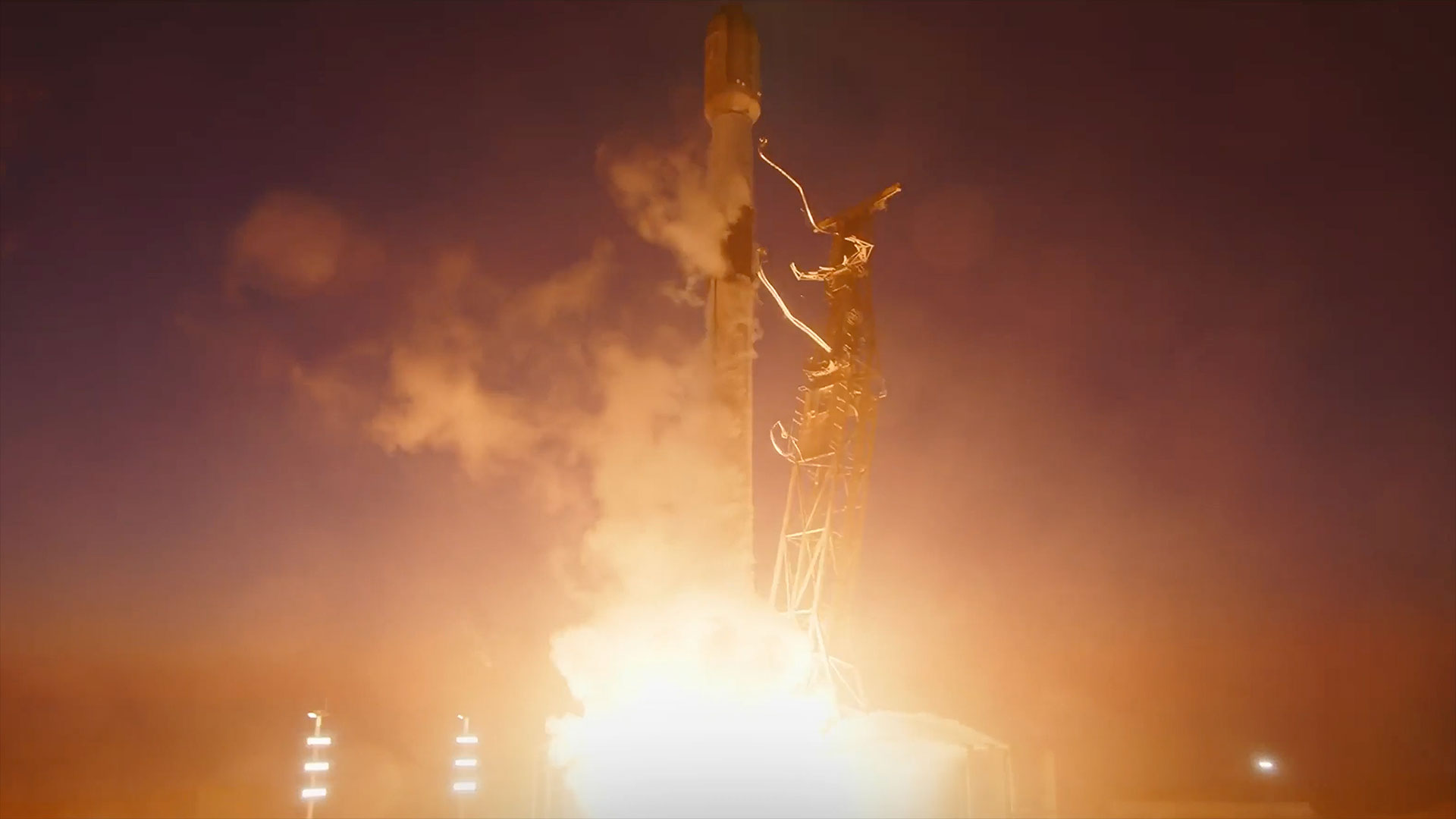Earth's Air Trapped in Moon Dirt, Scientist Speculates
Scientists speculated today on a solution to a longstanding mystery of why the Moon is overloaded with nitrogen.
It came from Earth, they say.
If the idea is correct, then the Moon could serve as an attic of information that could reveal when Earth's magnetic field was jumpstarted shortly after the planet formed.
Let's go back 4.5 billion years.
The Moon is thought to have formed when a Mars-sized object slammed into Earth in a glancing blow that kicked up a bunch of superheated material. The stuff orbited Earth, cooled, and condensed into a satellite.
It was all so hot that nitrogen and other so-called volatile elements didn't survive, theoretically leaving the Moon bereft of them.
But examinations of lunar soil brought back by Apollo astronauts finds plenty of nitrogen. Some would have arrived on the solar wind, but there's more than the Sun ought to have contributed.
Get the Space.com Newsletter
Breaking space news, the latest updates on rocket launches, skywatching events and more!
It's possible the lunar nitrogen arrived via interplanetary dust. But that idea hasn't been proved, nor are the potential quantities pinned down.
The Moon was closer
In the Aug. 4 issue of the journal Nature, Minoru Ozima of University of Tokyo and colleagues put forth an intriguing alternative
The new scenario is based on the possibility that Earth's magnetic field was not born with the planet 4.5 billion years ago, but developed sometime thereafter when the molten iron core took on a "differential rotation," meaning the outer and inner parts of the core rotate at different rates. Nobody knows exactly how or when all that developed.
The magnetic field serves as a protective shield, blocking many (but not all) of the charged particles that stream in from the Sun and keeping cosmic rays largely at bay, too. It also helps prevents Earth-bound particles from escaping willy-nilly into space.
Before the magnetic field formed, nitrogen molecules in Earth's atmosphere broke down into nitrogen ions, and ions in the outer atmosphere escaped freely to the Moon, Ozima's team figures.
Back then, Earth and the Moon were much closer than they are today, so it would have been easier for the satellite's gravity to lure the ions in.
If that's the case, then scientists should be able to find out when the magnetic field turned on by checking if the amount of nitrogen is significantly higher in lunar soil of a particular age.
Back to the Moon?
The investigation won't be simple.
The Moon may in fact contain different flavors of nitrogen from all three sources -- the Sun, interplanetary dust particles, and Earth, says Bernard Marty, a French researcher who wrote an analysis of the concept for Nature.
"Ozima and colleagues' hypothesis is nonetheless thought-provoking, and has the merit of being testable," Marty writes. One way to do that is to analyze soil from the far side of the Moon -- a new mission would be required -- which should have a different composition because it has faced away from the Earth for most of the Moon's history.
It's not the only reason to go back. Scientists also think the Moon may be loaded with terrestrial rocks that were kicked up long ago by asteroid impacts. Literally tons of rocks that pack clues to Earth's early history could be sitting within inches of the lunar surface.
- Top 10 Cool Moon Facts
- Moon Mechanics: What Really Makes Our World Go 'Round
- 24 Hours of Chaos: The Day The Moon Was Made
- Breakthrough: New Way to Peek Inside Earth
Join our Space Forums to keep talking space on the latest missions, night sky and more! And if you have a news tip, correction or comment, let us know at: community@space.com.

Rob has been producing internet content since the mid-1990s. He was a writer, editor and Director of Site Operations at Space.com starting in 1999. He served as Managing Editor of LiveScience since its launch in 2004. He then oversaw news operations for the Space.com's then-parent company TechMediaNetwork's growing suite of technology, science and business news sites. Prior to joining the company, Rob was an editor at The Star-Ledger in New Jersey. He has a journalism degree from Humboldt State University in California, is an author and also writes for Medium.
